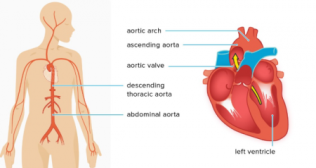
Holter Monitoring: All You Need to Know
The heart's rhythm is a constant, steady beat that we rarely notice until something feels amiss. When patients report fleeting symptoms like palpitations, dizziness, or unexplained fainting spells, a doctor's first diagnostic step is often an electrocardiogram (ECG). An ECG provides a valuable, but very brief, snapshot of the heart's electrical activity. The problem is, many heart rhythm disturbances are intermittent and may not occur during the few seconds of an ECG recording.
This is where Holter monitoring comes in. It is a crucial diagnostic tool that bridges the gap, allowing doctors to see what the heart is doing not just for a moment, but over an extended period of normal, daily life. This continuous recording is essential for capturing sporadic events and getting a clear, accurate diagnosis.
What Is a Holter Monitor?
A Holter monitor is essentially a portable, wearable version of an ECG machine. It is a small, battery-operated device, about the size of a mobile phone, that continuously records your heart's electrical activity. The monitor is connected by several wires (leads) to small electrodes that are placed on your chest. These electrodes detect the tiny electrical signals that your heart produces with every beat.
The device records this information on a memory card for a specified period, typically 24 to 48 hours, but sometimes longer. This provides your cardiologist with a comprehensive, uninterrupted log of your heart's rhythm as you go about your daily routine, giving them a much better chance of capturing any abnormalities.
Common Holter Monitor Uses
A doctor will recommend a Holter monitor test when they need more information than a standard ECG can provide. The primary Holter monitor uses are centered on diagnosing and evaluating heart rhythm problems (arrhythmias).
Investigating Unexplained Symptoms
This is the most common reason for a holter test for heart monitoring. It is used to investigate symptoms such as:
- Palpitations: A feeling of a fluttering, racing, or pounding heartbeat.
- Syncope (Fainting) or Presyncope (Near-Fainting): Unexplained fainting spells or episodes of feeling like you are about to faint.
- Dizziness or Lightheadedness: Frequent or unexplained dizzy spells.
- Unexplained Shortness of Breath: When not related to exertion.
Detecting Arrhythmias
The continuous nature of the test is ideal for detecting arrhythmias that are infrequent and unpredictable. This includes conditions like:
- Atrial Fibrillation (AFib): A common type of irregular and often rapid heartbeat.
- Bradycardia: A heart rate that is too slow.
- Tachycardia: A heart rate that is too fast.
Assessing Treatment Effectiveness
For patients already diagnosed with an arrhythmia, a Holter monitor can be used to see how well their medication (like beta-blockers or anti-arrhythmic drugs) is working to control their heart rate and rhythm. It can also be used to check the function of an implanted pacemaker.
The Holter Monitor Test: What to Expect
The Holter monitor test is a non-invasive and painless procedure. Understanding the process can help you prepare for the monitoring period.
The Setup Appointment
You will have a brief appointment at a hospital or clinic to have the monitor fitted. A technician will:
- Clean small areas of your chest to ensure a good connection.
- Attach several sticky electrodes to your skin.
- Connect the electrode wires to the Holter monitor device.
- Show you how to secure the device, usually with a strap worn over your shoulder or clipped to your belt or waistband.
The technician will give you important instructions, most notably about keeping a diary.
During the Monitoring Period
Once the monitor is on, you can go home and resume your normal daily activities. The key is to act as you normally would to ensure the recording reflects your typical heart activity. There are a few important things to do:
- Keep the Device Dry: You will not be able to shower, bathe, or swim while wearing the monitor, as it cannot get wet.
- Keep a Detailed Diary: This is a critical part of the test. You will be asked to log the time of any symptoms you experience, no matter how minor. For example, you should write down "10:15 AM - felt a fluttering in my chest" or "3:30 PM - felt dizzy after climbing stairs."
You should also log your major activities, such as walking, eating, sleeping, and moments of stress. This diary allows the doctor to correlate your symptoms directly with any rhythm changes recorded by the device.
Returning the Device
After the 24 or 48-hour period is over, you will return to the clinic. The technician will remove the electrodes and the device, which is a quick and painless process. You can then go about your day.
Understanding the Results and Cost
The data from the monitor's memory card is downloaded to a computer. A cardiologist or a specialized technician will then carefully analyze the entire recording, paying close attention to the times you noted in your diary. They will look for any abnormalities in your heart rhythm and correlate them with your logged symptoms. Your doctor will then discuss the results with you at a follow-up appointment.
The Holter monitor test cost can vary depending on the healthcare facility, the city, and the duration of the monitoring. While there is a cost associated with this specialized test, its diagnostic value is immense. It often provides the definitive answers needed to diagnose a condition, which can prevent the need for more invasive and expensive testing down the line.
A Clearer Picture of Your Heart's Health
The Holter monitor is an invaluable diagnostic tool that provides a continuous, real-world look into the electrical workings of your heart. It empowers doctors to diagnose elusive arrhythmias and understand the cause of concerning symptoms that a standard ECG might miss.
By capturing a complete picture of your heart's activity during your daily life, this simple, non-invasive test provides the clarity needed for an accurate diagnosis. This leads to more effective treatment, better management of your condition, and ultimately, greater peace of mind.
Frequently Asked Questions
1. Is wearing a Holter monitor uncomfortable?
Ans. The monitor itself is small and lightweight. Some people may experience minor skin irritation from the electrode adhesive, but the test is generally not considered uncomfortable.
2. Can I use my mobile phone or other electronic devices while wearing the monitor?
Ans. Yes. Modern Holter monitors are not affected by most common electronic devices like mobile phones, laptops, or microwaves.
3. What happens if an electrode falls off?
Ans. The technician will show you how to reattach an electrode if it becomes loose or falls off. It's important to reattach it as soon as possible to ensure a continuous recording.
4. How accurate is a Holter monitor test?
Ans. The test is very accurate at recording the heart's electrical activity. Its effectiveness in making a diagnosis depends on whether you experience your typical symptoms during the monitoring period.
5. What if I don't have any symptoms while wearing the monitor?
Ans. This is still valuable information. If you have no symptoms and the monitor shows no significant arrhythmias, it can help your doctor rule out a heart rhythm problem as the cause of your issues.



















